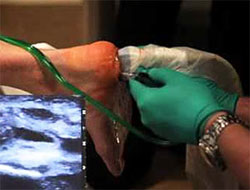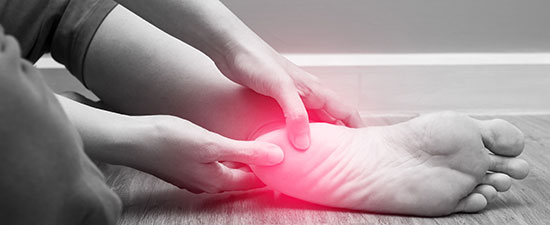- Home
- Advanced Treatments
- Tenex
Tenex Procedure

If you’re one of 8 million Americans experiencing pain and discomfort in the Achilles tendon and/or plantar fascia, the Tenex Health Procedure, a minimally invasive treatment for soft tissue damage, may help.
Developed with Mayo Clinic, Tenex Health created a new conservative tendon procedure to help remove damaged tissue and leave behind healthy tissue, reducing tendon pain, aiding healing, and reducing the likelihood of more invasive treatment in the future.
- What can cause fascia discomfort or tendon pain?
- How are Achilles tendinopathy and plantar fasciitis traditionally treated?
- What is the Tenex procedure?
- The TenJet System: a new and better alternative to Tenex?
- What is the TenJet procedure?
- Why Turn to UFAI for your TenJet or Tenex procedure
- Tenex FAQs
- What is the success rate of Tenex? TenJet?
- Is Tenex better than PRP?
- What is the difference between Tenex and TenJet?
-
Foot and Ankle Surgeon at University Foot and Ankle Institute
Dr. Justin Franson, DPM, is a Board Certified Podiatric Foot and Ankle Specialist and Diplomate of the American Board of Podiatric Surgery. He attended the School College of Podiatric Medicine in Chicago, graduating in 2001. Dr. Franson then accepted a three-year residency program at the Greater Los Angeles VA and UCLA County Hospital.
Dr. Franson specializes in several areas including total ankle replacement and sports medicine. Treating athletes and weekend warriors like himself brings him a lot of joy. Dr. Franson keeps active with running marathons, triathlons, hiking, basketball, and golf.
Read more about Tenex on Our Blog
 Everyone at UFAI is extremely professional and thorough. Over the last several years, I’ve been to several different doctors fo...Stacey D.
Everyone at UFAI is extremely professional and thorough. Over the last several years, I’ve been to several different doctors fo...Stacey D. Overall, it was a great experience. I've been coming to Dr. Kellman for about a year and he and his staff are very helpful.Vanessa W.
Overall, it was a great experience. I've been coming to Dr. Kellman for about a year and he and his staff are very helpful.Vanessa W. ExcellentDebasish M.
ExcellentDebasish M. Everyone was friendly and professional.Victor L.
Everyone was friendly and professional.Victor L. Very efficient and an excellent serviceHorwitz J.
Very efficient and an excellent serviceHorwitz J. Chaos in the office checkin. We weren’t forewarned about the iPad data collection. That made me late for a following appointmen...Carl C.
Chaos in the office checkin. We weren’t forewarned about the iPad data collection. That made me late for a following appointmen...Carl C. Dr Nalbandian is an exceptional doctor and person. The staff respectfully & compently delt with an issue I had regarding a prev...Karen M.
Dr Nalbandian is an exceptional doctor and person. The staff respectfully & compently delt with an issue I had regarding a prev...Karen M. Visiting the office is a pleasurable occurance.Thomas J.
Visiting the office is a pleasurable occurance.Thomas J. Was lucky to be referred to Dr. Babak Baravarian in Oct.2010 by my " Podiatrician " cousin. She told me good words about him an...Mahkameh S.
Was lucky to be referred to Dr. Babak Baravarian in Oct.2010 by my " Podiatrician " cousin. She told me good words about him an...Mahkameh S. great doc..James G.
great doc..James G. Dr Kelman and his staff are always wonderfully caring and respectful to my father who has Alzheimer's dementia.Erland E.
Dr Kelman and his staff are always wonderfully caring and respectful to my father who has Alzheimer's dementia.Erland E. Thank you for being there for your patients.Dieter B.
Thank you for being there for your patients.Dieter B.

